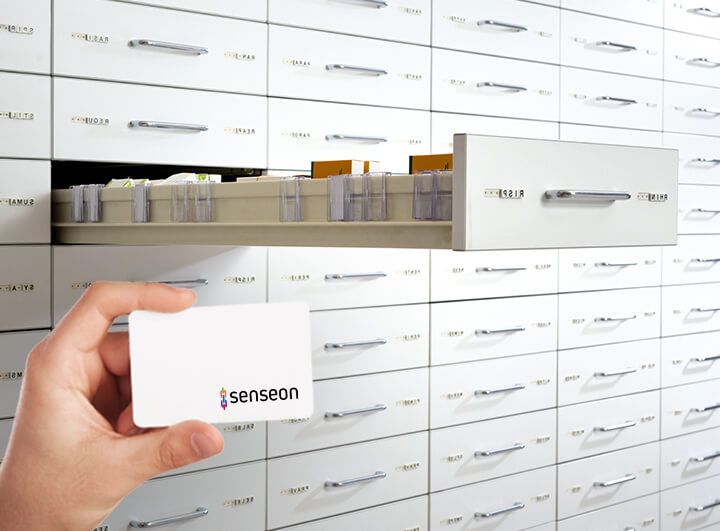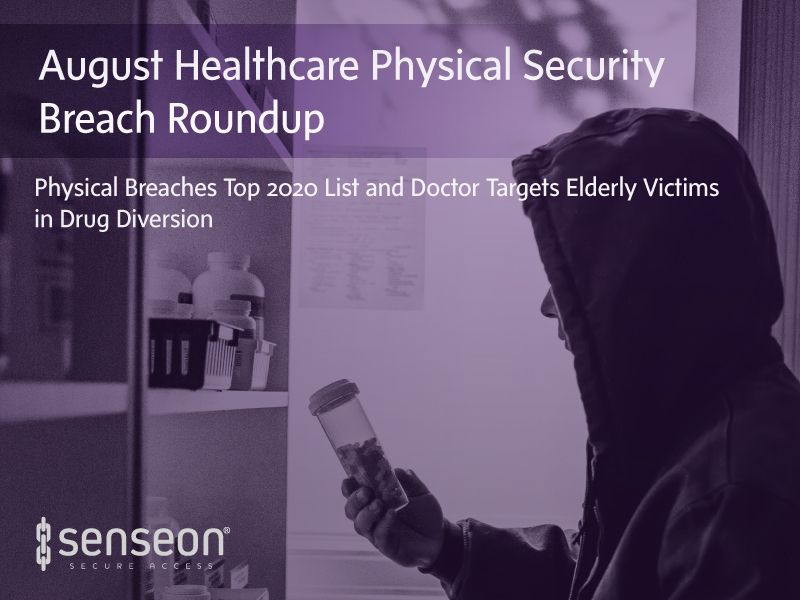Physical Breaches Top 2020 List and Doctor Targets Elderly Victims in Drug Diversion
Take control of the physical data breach and drug diversion risks that threaten your healthcare organization with Senseon’s Physical Security Breach Roundup.
We bring you the most recent physical data breach and drug diversion announcements each month. If you want to learn more about what you can do to minimize the risk of your facility ending up on this list, we can help.
Physical Breach & Security News
Physical Breaches Top Mid-Year Healthcare Report
Even with a pandemic fueling a shift in cybersecurity attacks, the recent Protenus Breach Barometer still prominently features physical attacks.
You might remember the Health Share breach in Oregon — a case of theft that ended up impacting 654,000 patients. A laptop stolen from transportation vendor, GridWorks, jeopardized the security of Oregon’s largest Medicaid coordinated care organization, exposing patient names, contact information, dates of birth and Medicaid IDs. The encryption status of the device is still uncertain, but in response, Health Share has beefed up its security, updating annual audit processes with contractors and improving training.
Security Impact of COVID-19 Examined in Report
It’s been a common belief that the pandemic has increased cyber attacks in healthcare, but a Vectra spotlight report tells a different story.
Vectra claims that there has been an increase in opportunistic attacks, but at the same time, external activity doesn’t appear to have led to the internal activity that we normally see in successful attempts. What Vectra did find, is an increase in two trends during Q1 and Q2:
- Command-and-control behaviors
- Data exfiltration behaviors
This trend aligns with the high-speed shift to cloud services as a response to the pandemic. They also add that healthcare organizations are doing a good job mitigating inbound attacks.
Drug Diversion News
What’s Driving Professionals To Steal Drugs
If you’ve been following our drug diversion news, you’ve seen a parade of pharmacists and nurses jeopardizing their careers after being arrested for diverting opioids and other drugs from their jobs. They’ve been willing to put the safety of their patients and even other staff at risk, not to mention the financial and legal consequences for their organization.
This article from Pharmacy Times delivers the insight that while people who are diverting clinical drugs have the same challenges in quitting as everybody else, some might also be afraid that getting professional help will damage their reputations and career.
Dallas Doctor Preys on Elderly Victims
Dr. Edward Agura has pleaded guilty to possession of a controlled substance by misrepresentation of fraud.
The doctor admitted that, beginning in 2016, he began issuing prescriptions in the names of elderly patients without their consent or awareness — drugs that were for his personal use. These prescriptions included hydrocodone, fentanyl, oxycodone, alprazolam, triazolam, and lorazepam which were dispensed through Dallas area pharmacies. The doctor also admitted to creating false medical records in the names of the elderly patients.
Pharmacist Steals Opioids from Tenn Hospital
Joshua Johson has surrendered his license after facing a felony theft of property charge. The Tennessee pharmacist has been indicted after hundreds of incidents of stealing opioids from St. Francis in Bartlett, where he allegedly rigged the hospital’s automated dispenser.
Johnson is accused of accessing the dispenser over 400 times, taking over 2,000 ampules of hydromorphone — enough to create almost 700 doses of patient-controlled anesthesia. It is still unclear what Johnson did with the stolen medication.

Fortify your drug diversion strategies with Senseon’s highly-intelligent electronic locking systems.
Now’s a great time to learn more about how drugs are stolen from healthcare facilities. Start here with our introduction to drug diversion.







